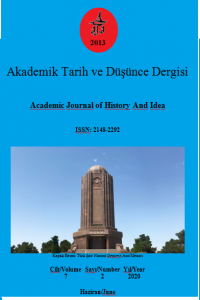I Şah Abbasın islahatları
XVI əsrin sonlarında Səfəvi imperiyası ağır böhran içində idi. Osmanlı imperiyası ilə müharibədə uğursuzluq siyasi böhranı daha da ağırlaşdırmışdı. Bu dövrdə demək olar ki, müstəqil olan və bir-birinə qarşı mübarizə aparmaqdan usanmayan Qızılbaş əmirlərinin mərkəzi hakimiyyətə tabe olmamaq cəhdləri vəziyyəti daha da ağırlaşdırmışdı. Məhz belə bir gərgin dövrdə, 1587-ci ildə Səfəvi taxt-tacına Şah Abbas gətirildi. I Şah Abbas Qızılbaş əmirlərinin itaətsizliyinə son qoymaq, ayrı-ayrı vilayətlərdə onların müstəqillik cəhdlərinin qarşısını almaq, onların mənsub olduqları tayfalarla əlaqələrini zəiflətmək mərkəzi hakimiyyəti möhkəmləndirmək və güclü nizami ordu yaratmaq məqsədilə mühüm islahatlar həyata keçirməyə başladı. I Şah Abbasın islahatları nəticəsində Səfəvi imperiyası nəinki əvvəlki qüdrətini bərpa etdi, hətta daha da gücləndi. Qızılbaş əyanlarının özbaşınalığına son qoyuldu, yerlərdə ayrı-ayrı “sülalə hakimlərinin” aradan qaldırılması nəticəsində mərkəzi hakimiyyət möhkəmləndirildi və tam siyasi sabitlik bərqərar oldu. Dövlətin əsas dayağı olan daimi nizami ordu yaradıldı, dövlətin müdafiə qabiliyyəti gücləndirildi. Qısa müddət ərzində işğal olunmuş torpaqlar azad edildi və Səfəvi imperiyası Yaxın və Orta Şərqin ən qüdrətli imperiyalarından birinə çevrildi.
Anahtar Kelimeler:
Səfəvi imperiyası, Osmanlı imperiyası, Qızılbaş əmirləri, I Şah Abbas, I Şah Abbasın islahatları
The Reforms of Shah Abbas I
At the end of the 16th century, Safavid Empire was in a serious crisis. The political crisis was exacerbated by failure in the war with the Ottoman Empire. During this period, the attempts of Qizilbash emirs, who were almost independent and did not weary of fighting against each other, to disobey the central government were further aggravated the situation. It was in such a hard time, in 1587, that Shah Abbas was brought to the Safavid throne. Shah Abbas I began to implement important reforms, the main aims of which were to put an end to the disobedience of the Qizilbash emirs, to prevent their attempts to pursue independence in provinces, to weaken their ties with the tribes they belong to, to strengthen the central government, and to create a strong regular army. As a result of the reforms of Shah Abbas I, the Safavid empire not only regained its former might (strength), it even became stronger. The disobedience of arbitrary Qizilbash emirs was brought to an end, as a result of the elimination of individual "dynastic rulers" in the provinces, the central authority was strengthened and total political stability was established. The standing army, a main pillar of the state, was created, and the defense capacity of the state was strengthened. In a short time, the occupied lands were liberated, and the Safavid empire became one of the most powerful empires in the Near and Middle East.
- Yayın Aralığı: Yılda 6 Sayı
- Başlangıç: 2013
- Yayıncı: Hakan YILMAZ
Sayıdaki Diğer Makaleler
From History of The Madrassahs of Uzbekistan
Isparta İli Ağızlarında Damak Uyumu
Karaburun Kazası Hasseki (Haseki) Köyü Osmanlı Dönemi Mezar Taşları Üzerine Bir İnceleme
İlker Mümin ÇAĞLAR, Cengiz GÜRBIYIK, Abdullah DOĞTEKİN
Hitit Metinlerinde Kadınları ve Tanrıçaları Temsil Eden Bir Nesne: TUDITTU(M)
2014-2019 Yılları Arasında Okul İklimi ile İlgili Yapılan Tezlerin İncelenmesi
Veysel ÜSTÜNDAŞ, Gündoğan TANBOĞA, Ali ANALAY, Ayfer ALTUNÇ
Öğretmen Algılarına Göre Okul Yöneticilerinin Dönüşümcü Liderlik Özellikleri
Mehmet İhsan KORTARICI, Mehmet Veysi ALTUNKAYA, Ali KOCAMAN, Yunus AYHAN
تاثیر ادبیات و معارف قرانی در تحول معنای کلمه حبدرعصر جاهلی
